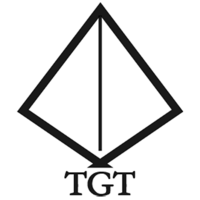The Glacier Trust
The Glacier Trust is a not-for-profit organisation founded in 2008 by art dealer Robin Garton, dedicated to monitoring and publishing research on glaciers in the Himalayan mountain regions.[1] The trust focuses on working with locals in the Himalayan countryside in order to secure and prevent the effects of climate change on the landscape.[2]
 | |
| Founder | Robin Garton |
|---|---|
| Registration no. | 1124955 |
| Coordinates | 51.363348°N 1.991548°W |
Official language | English |
| Website | theglaciertrust |
In September 2015, Robin Garton, founder of TGT, died whilst on a hiking trip in Scotland. As of 2018, Dr. Morgan Phillips and Richard Allen are co-directors of the organisation.[3]
Mission
The trust has multiple missions dedicated to monitoring and mitigating the effects of landslides on the Himalayan landscape. The charity also helps to protect farmers in the region from water supply exhaustion whilst balancing this with the changing glacial supply levels. Basic education and training are provided in partnership with organisations in the areas such as Nepal, making sure that the locals are adequately equipped to tackle the effects of climate change on their way of life. The charity adopts a non invasive approach to reforming glaciation by making sure that the traditional methods of the locals remain untouched.[4]
Projects
The Glacier Trust has outlined key projects that are taking place to ensure that the organisation is effectively running its operation. Many of the goals of the organisation revolve around solving geotechnical engineering challenges.[5]
| Geographical Belt | TGT Project | Add-ons (Some examples) |
|---|---|---|
| High Hills (Himal). High atmospheric warming. Snowfall increasingly unpredictable. Permafrost degradation. | Coping with landslides, rockfall and river channel blocking. Restoration of ground cover. | Early warning systems. Satellite and Technical monitoring (RS, GIS). Risk analysis. |
| Mid Hills (Pahad). Highest atmospheric warming, especially in winter. Severe rainfall variability. | Agroforestry, Forest conservation and alternative fuels. Combating invasive plant species. | Bioengineering and slope stability. Reduction of monsoon sheet flow. Crop, animal and human diseases. Weed reduction. Insect (mosquito) infestation. |
| Foot Hills (Siwaliks). Least atmospheric warming but greatest rainfall variation. | Integrated Water Resource Management (IRWM), Drought coping strategies. | Bioengineering and slope stability. Past community responses to CC. Alterations to vegetable (cabbage) germination periods. |
References
- "Wiltshire Glacier Trust founder Robin Garton missing in Highlands". BBC News. 2015-09-29. Retrieved 2017-08-06.
- "Family pay tribute to missing hill walker". This Is Wiltshire. Retrieved 2017-08-06.
- "People". The Glacier Trust. Retrieved 3 November 2018.
- "Robin Garton | Geography and Environment | University of Southampton". www.southampton.ac.uk. Retrieved 2017-08-06.
- "Where We Work". The Glacier Trust. Retrieved 31 July 2018.